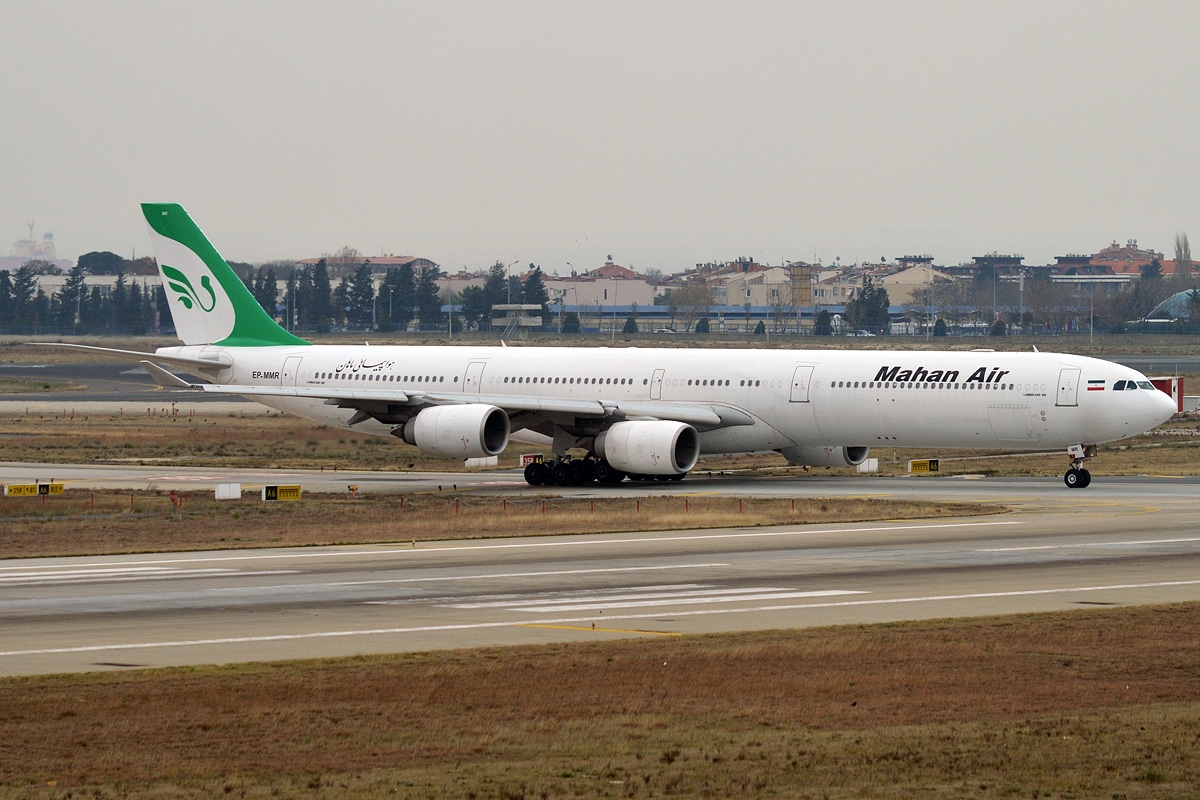Aerospace
Bomb Threats In Iranian Flight Moving To China; IAF Jets Scrambled To Intercept
When flying above Indian airspace, a Mahan, Iran-based airline identified the bomb threat and immediately alerted Delhi ATC.

When flying above Indian airspace, a Mahan, Iran-based airline identified the bomb threat and immediately alerted Delhi ATC. Indian Air Force swindled the fighter jet to follow the aircraft for additional controls as soon as they received the information.
In Gesture To Israel, Saudi Arabia Opens Airspace To ‘All Carriers’.(Opens in a new browser tab)
Mahan Air pilots were instructed by Delhi ATC Airport to land aircraft in the Jaipur airport. They did so after briefly descending the aircraft, and the altitude was adjusted on the Flight Radar flight tracking website. However, Mahan Air continued to fly to Guangzhou, China, as its destination.
A bomb threat was received on board a Mahan Air Airbus A340 as it was flying over Indian airspace, coming from Tehran, Iran, and the Indian Air Force scrambled fighter fighters a short while ago. Up till it exited Indian airspace, the IAF fighters escorted the flight.
A Mahan Air flight, Tehran -> Guangzhou, received a bomb threat when flying over India. According to @ANI "Delhi ATC suggested the aircraft to go to Jaipur but the aircraft pilot refused & left Indian airspace"
Currently about 2h away from Guangzhou https://t.co/mk6FioNbBe pic.twitter.com/D3nUinv1Mu
— Flightradar24 (@flightradar24) October 3, 2022
The plane circled above Delhi’s airspace in preparation for landing, but the pilot ultimately elected to go on. Details are still a mystery, and only the truth will be revealed after the landing.

Aerospace
Boeing Transfers Rocket Stage to NASA, Paving Way for Human Moon Mission

Boeing has achieved a significant milestone by providing NASA with the second core stage of the Space Launch System (SLS) rocket.
This crucial component, crafted at NASA’s Michoud Assembly Facility (MAF), is set to propel the Artemis II crew into lunar orbit, marking humanity’s return to deep space after a 50-year hiatus.
The monumental Boeing-built rocket stage, the largest element of the Artemis II mission, will embark on a journey aboard the Pegasus barge, traveling 900 miles to NASA’s Kennedy Space Center.
Comparison of two legendary aircraft B777x vs B747 aircraft:Click here
Upon arrival, it will be meticulously integrated with other essential Artemis II components, including the upper stage, solid rocket boosters, and NASA’s Orion spacecraft within the iconic Vehicle Assembly Building. This intricate integration process is a vital step toward the eagerly anticipated Artemis II launch, slated for 2025.
“Boeing-built products helped land humankind on the moon in 1969, and we’re proud to continue that legacy through the Artemis generation,” remarked Dave Dutcher, vice president and program manager for Boeing’s SLS program. “Together, with NASA and our industry partners and suppliers, we are building the world’s most capable rocket and paving the way to deep space through America’s rocket factory in New Orleans.”
NASA, Lockheed Martin Reveal X-59 Quiet Supersonic Aircraft:Click here
The delivery of Core Stage 2 marks a significant achievement in the evolution of the SLS rocket. Towering over 200 feet and powered by four RS-25 engines, this core stage, coupled with two solid-fueled booster rockets, will generate a staggering 8.8 million pounds of thrust. This immense power is crucial to launching Artemis II and future missions into the vast expanse of space.
The SLS rocket stands unparalleled in its capability to transport both crew and substantial cargo to the moon and beyond in a single launch. Its extraordinary capacity will facilitate the delivery of human-rated spacecraft, habitats, and scientific missions to destinations including the moon and Mars, ushering in a new era of space exploration.
-

 Travel1 week ago
Travel1 week agoAir India to Expand US Operations with Three New Routes After a Decade
-

 Travel2 weeks ago
Travel2 weeks agoWhy We Should Avoid These Stamps in a Passport
-

 Airlines1 month ago
Airlines1 month agoInvestigations Reveal Fake Chinese Titanium in Boeing and Airbus Jets
-

 Tech4 weeks ago
Tech4 weeks agoChina’s CATL Plans 1,800-Mile Electric Plane Launch by 2027
-

 Airport3 days ago
Airport3 days agoTop 10 Largest Airports in the World by Size
-

 Aerospace4 weeks ago
Aerospace4 weeks agoChina’s Fighter Jets Turn Wings into Autonomous Drones
-

 Airlines4 days ago
Airlines4 days agoAir India Rolls Out A350s for Delhi-New York JFK and Newark Routes
-

 Defence3 weeks ago
Defence3 weeks agoBoeing Enhances Chinook with New Engines and Block II Upgrades at $96 Million







